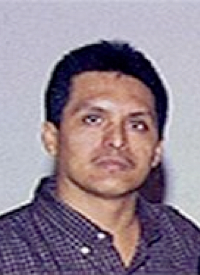
As a new leader rises to the top of the Zetas — one of Mexico’s most violent and powerful drug cartels — the belief that the situation across America’s southern border could not get any worse has proven to be a failure of imagination. Even by the vicious standards of the cartels, Miguel Angel Treviño Morales (pictured, below left) stands out as a man described by experts as “extremely brutal, to the point of sadism.” As the Mexican government continues its fifth year of open warfare against the cartels — a war in which 50,000 people have already lost their lives — the rise of Morales to power illustrates a deteriorating situation which seems to drift more and more out of control.
 As reported for The New American last March, the Zetas and other cartels already wield significant influence within the Mexican government. As noted at that time, entire city police departments have been arrested as agents of the cartels. And now Morales’ rise to power appears to signal that the cartels will step up the level of violence. As ABC News reported on October 13:
As reported for The New American last March, the Zetas and other cartels already wield significant influence within the Mexican government. As noted at that time, entire city police departments have been arrested as agents of the cartels. And now Morales’ rise to power appears to signal that the cartels will step up the level of violence. As ABC News reported on October 13:
Treviño Morales, also known as El 40 or the Monkey, became the uncontested head of the Mexico’s most feared drug cartel when former kingpin Heriberto Lazcano was killed in a shootout with Mexican Marines on Sunday. Lazcano had been linked to hundreds of murders, including the massacre of 72 civilians, but Treviño Morales is allegedly even more bloodthirsty. One of his preferred methods of dealing with enemies, say authorities, is burning them alive.
As a newly minted underboss, Treviño Morales had a traditional gangster’s taste for fast cars, women, and fancy guns, and reportedly liked to hunt game imported from Africa. He also, however, developed a particular reputation for brutality in a group already renowned for violence. His favored methods for dispatching enemies were dismembering them while still alive, or making them into a “guiso,” or stew — stuffing them in 55-gallon oil drums, adding gasoline and burning them alive.
Morales’ designation as El 40 testifies to his early involvement in the cartel; his brother is number 42. His long-standing membership in the Zetas comes without the usual requisite military background shared by many leaders of the cartel. As ABC News noted: “Treviño Morales joined the Zetas soon after their formation. The Zetas began in the late 1990s as the security wing of the Gulf Cartel. The 14 core members of the Zetas, including Heriberto Lazcano, all had military backgrounds, and took ranks based on when they’d joined the group.”
Although the death of Lazcano might seem like progress in the drug war — and will no doubt be celebrated by Mexican authorities as a victory — his death at the hands of a government commandos appears to have been a lucky break for the government. As The Australian reported on October 14:
In the savage world of Mexico’s so-called narco wars, Lazcano was known as “the Executioner” for his gruesome record of dispatching men, women and even children by lowering them slowly into vats of boiling oil.
Yet when he died last Sunday after a chance encounter with commandos, experts believe he may already have been sidelined in the ranks of the Zetas by the terrifying rise of Miguel Angel Treviño Morales, a Zetas enforcer whose northern border home town of Nuevo Laredo is a gateway for money, drugs and weapons flowing into and out of America.
The backgrounds of the various leaders of the cartel often defy the stereotypes linking poverty to criminal activity; Lazcano’s family was relatively affluent and both he and his brothers received an education, as an article translated for BorderlandBeat.com documented:
The Lazcanos took up farming and cattle ranching, until they became one of the biggest producers and one of the wealthiest families in the county. Those who knew Heriberto recall that the family adapted quickly to Apan, but, despite that, the three sons were sent to the D.F. (Distrito Federal) to study. Nobody remembers exactly where in the capital they were sent, but Pedro received an education closely linked to the Church, which led him to become a priest for a few years, although he left that afterwards. Gabriel, his other brother, had a life much like Heriberto Lazcano’s, and he joined the military for some years.
After living in the Mexican capital, the three brothers went back with their family and moved to the city of Pachuca in the 1990’s. It was after that that the capo joined the military, from which he deserted in 1998 to become a member of the “Los Zetas” criminal organization, which began as the enforcement arm of Osiel Cardenas, former leader of the Gulf Cartel.
Now the leadership of the cartel has fallen to a man with a record which is even more brutal than that of his predecessor. And yet, as ABC News reported of Morales, several of his formative years were spent north of the border in Texas:
Treviño Morales, 41, was born in Mexico but spent some of his formative years in Dallas, Texas, where authorities say he had a criminal record as a teenager. He has a dozen siblings and reportedly still has family in the Dallas area.
According to the Associated Press, he became a teen go-fer for the Los Tejas gang, which was powerful in the Mexican border city of Nuevo Laredo, just across the Rio Grande from Laredo, Texas.
Morales’ rise to power comes after several other Zetas who might otherwise have led the cartel were arrested by authorities. Rival cartels have openly taunted him as a “Judas”; press reports claim he may even have provided information on the whereabouts of cartel leaders to gain better treatment for his brother José, who is in custody in the United States on moneylaundering charges. With such accusations against Morales, his own treatment of suspected informants is all the more extreme. The Australian relates an incident in which both the influence of the Zetas and the barbarity of the gang’s new leader are succinctly summarized:
In 2009 Treviño Morales summoned dozens of Nuevo Laredo police officers — all of whom were in his pay — to a meeting where he identified a female officer as an informant, then beat her to death in front of them. Not one of the officers dared to intervene and the federal government was eventually obliged to send in troops to disband the force.
As reported nearly two years ago for The New American, the Mexican government has an appallingly poor record of prosecuting the perpetrators of major crimes in Mexico: Under two percent of all crimes are ever punished in a Mexican court of law. But even if Morales’ leadership of the Zetas implies a turn for the worse in Mexico, it seems unlikely that an American media obsessed with a presidential campaign and conflicts in the Middle East will turn their gaze closer to home and see the crisis raging across the border.
Photo: Members of Mexico Federal Investigation Agency, AFI, come out of a helicopter during a raid searching for members of the Juarez drug cartel near Ciudad Juarez, Mexico on June 14, 2006: AP Images




